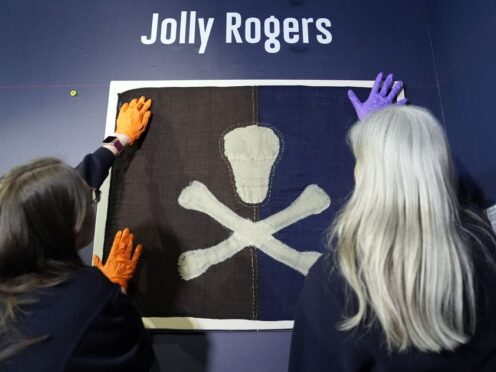
A Royal Navy submarine Jolly Roger flag believed to be the oldest surviving one of its kind is to go on display at a Portsmouth museum.
The maritime antique from the HMS E54, which was flown in 1916 during the First World War, will be showcased from April 27 at the Royal Navy Submarine Museum.
Museum curators aim to tell the “fascinating” history of the Jolly Roger flag, which is commonly believed to be a pirate flag despite originating from the Royal Navy.

Each flag is a unique historical record of the boat, with submarine crews hoisting them to show pride in their wartime successes, in contrast to pirates who raised their banners to scare other ships, museum chiefs said.
Symbols would be painted on flags with different meanings, such as a dagger to indicate a secret mission, or a bar to demonstrate the sinking of an enemy merchant ship, Alexandra Geary, the artefacts curator at the National Museum of the Royal Navy, said.
She added: “Each action a submarine carried out had its own symbol. These symbols would either be painted or sewn on to a bit of black material.
“Visitors are intrigued by our Jolly Rogers and enjoy deciphering their meanings. They give a fascinating insight into the often secret and mysterious world of the submariner under the waves and out of sight.”
The tradition has continued with examples including the HMS Conqueror flying a Jolly Roger on return from the Falklands War in 1982 and HMS Otus raising their flag on return from the Gulf War in 1991.

Enjoy the convenience of having The Sunday Post delivered as a digital ePaper straight to your smartphone, tablet or computer.
Subscribe for only £5.49 a month and enjoy all the benefits of the printed paper as a digital replica.
Subscribe